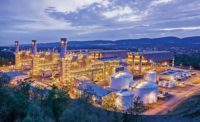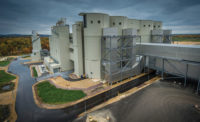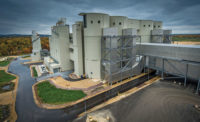Owner: Invenergy
EPC Contractor & Lead Design Firm: Kiewit
Gas Turbine Original Equipment Manufacturer: General Electric
Owner’s Engineer: HDR
Developing a safety program for constructing a 1,500-megawatt generating plant atop an abandoned coal mine in northeast Pennsylvania presented Kiewit with several unique challenges. The project’s sheer size required a massive workforce—more than 900 craftworkers at peak. An aggressive 28-month timeline would span two winter construction seasons and involve intricate tasks such as completing a half million yd of drill-and-blast rock excavation and installing advanced natural-gas-powered turbine technologies.
Yet for all its complexities, the project totaled 3 million work hours during construction with no lost-time injuries, complementing the facility’s completion ahead of schedule and under budget.
A key to success was fostering an environment of communication and trust through early engagement of a craft workforce new to the company’s safety practices, says Kiewit Power Constructors area manager Fred Zambon.
“We sought to empower workers to be safety champions on the jobsite,” Zambon says.
Elements of that approach included a Craft Voice in Safety program, which brought select craftworkers together as a committee of peers to participate in daily safety walks, listen to safety suggestions and meet with upper management. Committee members used those insights to continuously coach and mentor other craftworkers.
In addition, dedicated safety advisers with craft backgrounds served as full-time links between Kiewit’s safety department and workers. Selected for both their knowledge and communication skills, the safety advisers oversaw hands-on training during orientations, led daily safety walks and mentored short-service employees.
Zambon adds that construction safety has become more data-driven, a facet illustrated by the Lackawanna project team collecting hundreds of jobsite observations each month to identify areas to refocus attention and training. A “Life Saving Actions” program spotlighted close calls, where luck might well have been the only factor that had prevented an incident.
“Data has enlarged the vision of our program,” Zambon says, “allowing us to spend more time being proactive about alerting workers to a danger, rather than having it become a reactive lesson learned.”






Post a comment to this article
Report Abusive Comment